Promenade de Canet-en-Roussillon
The Promenade de Canet-en-Roussillon transforms the waterfront into a calm, pedestrian-first public realm. To begin with, through-traffic is removed. Access is limited to residents and essential services. Meanwhile, active mobility leads the design with a two-way cycle lane and a generous shared-surface street.
Transversal streets—Rue Pasteur, Rue Maréchal Foch, Avenue du Roussillon and others—extend as clear view corridors toward the sea. As a result, orientation improves and the coastline becomes present from within the town. At each junction, pocket plazas appear. In these small squares, long benches and individual chairs create flexible “urban living rooms.”
Large rectangular planters structure every stop. Moreover, planting follows the Occitanie local species catalogue and uses drought-tolerant Mediterranean shrubs. Existing palms are preserved and, in addition, Washingtonia filifera and Chamaerops humilis are introduced. Consequently, irrigation demand drops and biodiversity increases.
The material palette is robust and legible. Exposed-aggregate concrete and natural stone in beige and blue-grey distinguish walking, cycling, terraces and crossings. Therefore, accessibility and maintenance are improved. Finally, a unified family of light columns differentiates linear sections and plazas, enhancing comfort after dark.
The Promenade de Canet-en-Roussillon is one coherent project. Nevertheless, it will be delivered in two phases: Boulevard de la Jetée to Avenue du Roussillon first, and then to Place de la Méditerranée.
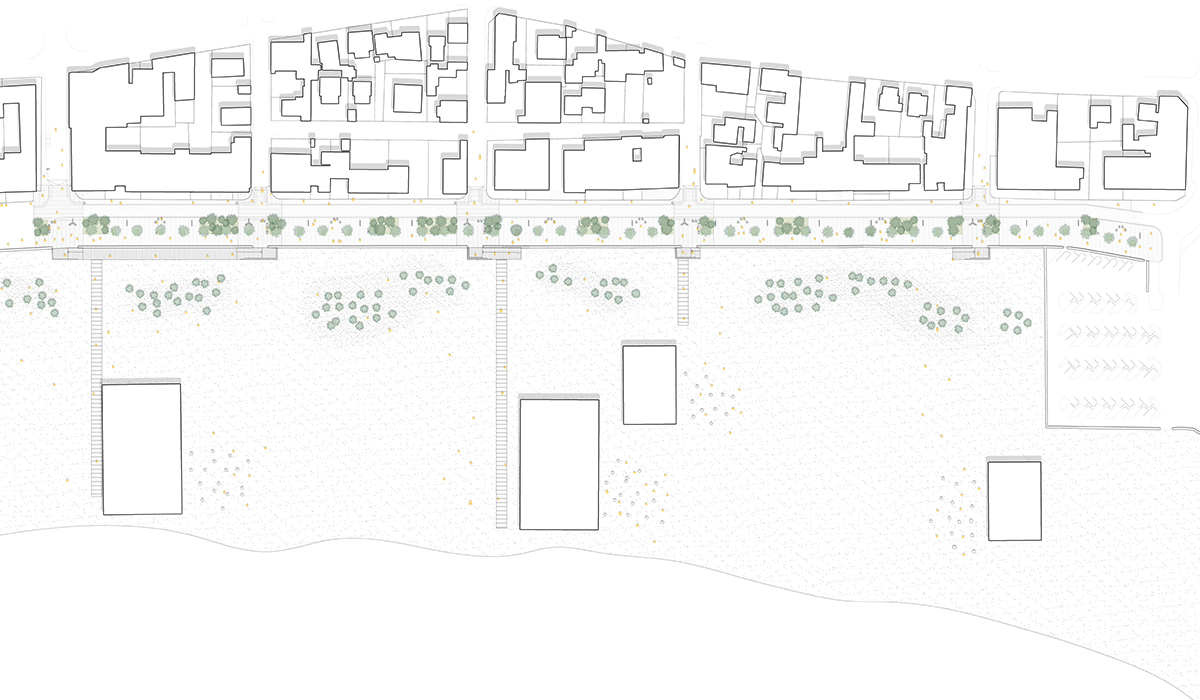
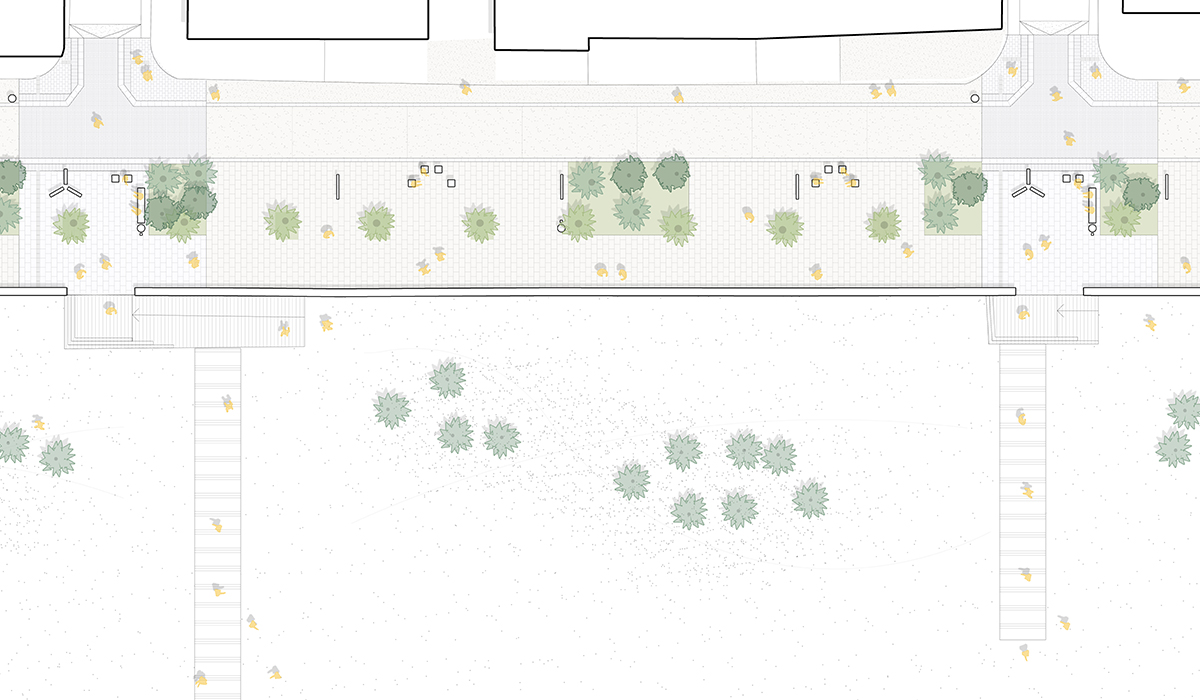


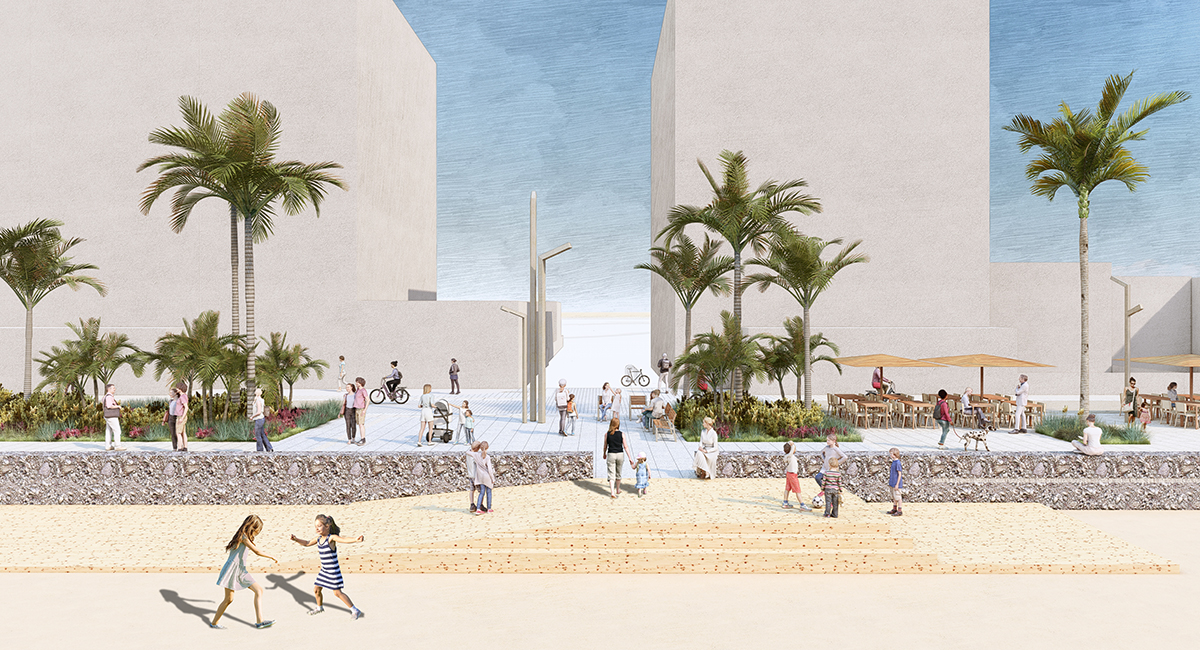

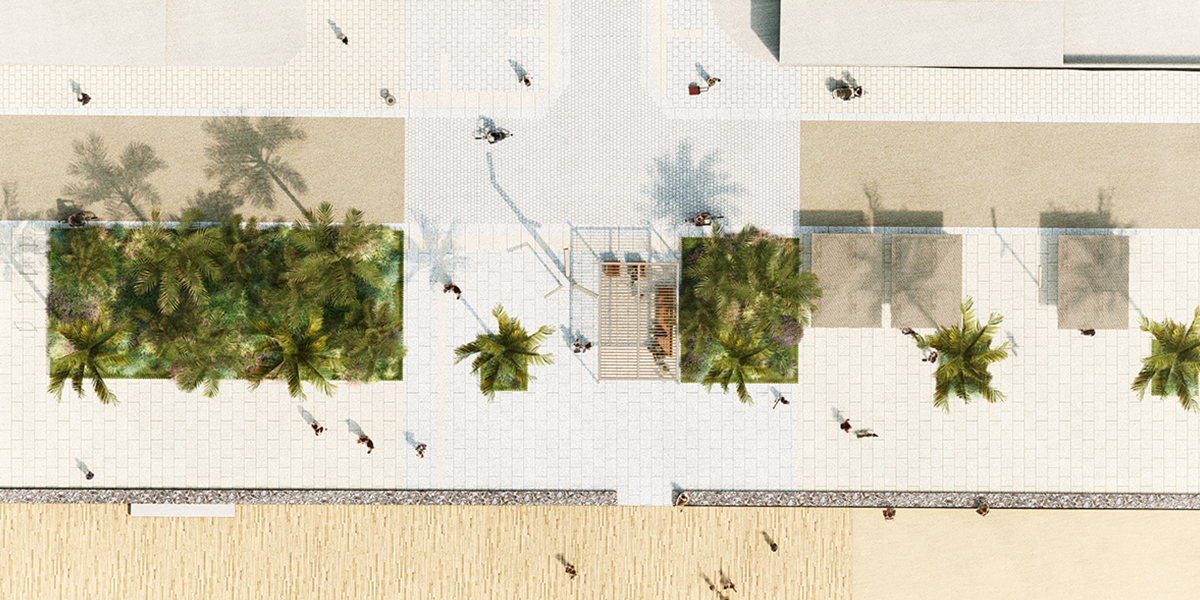
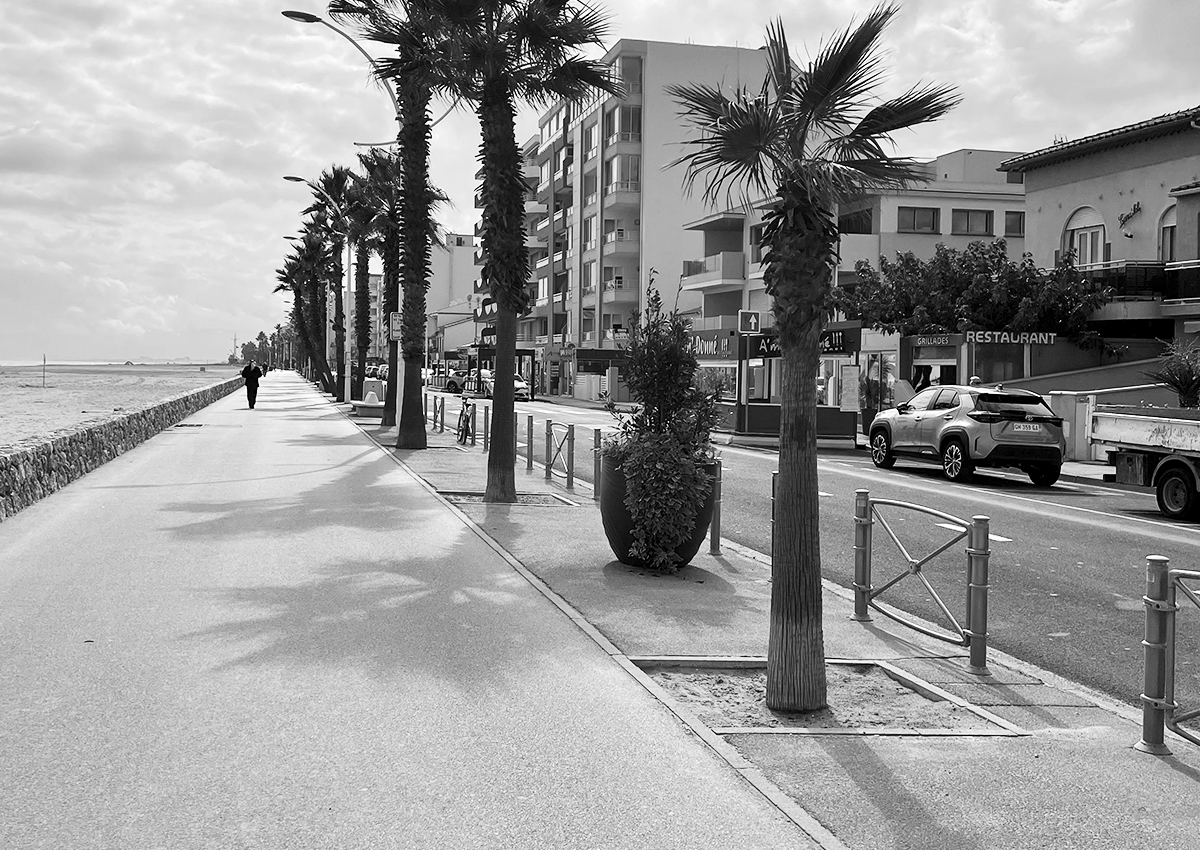
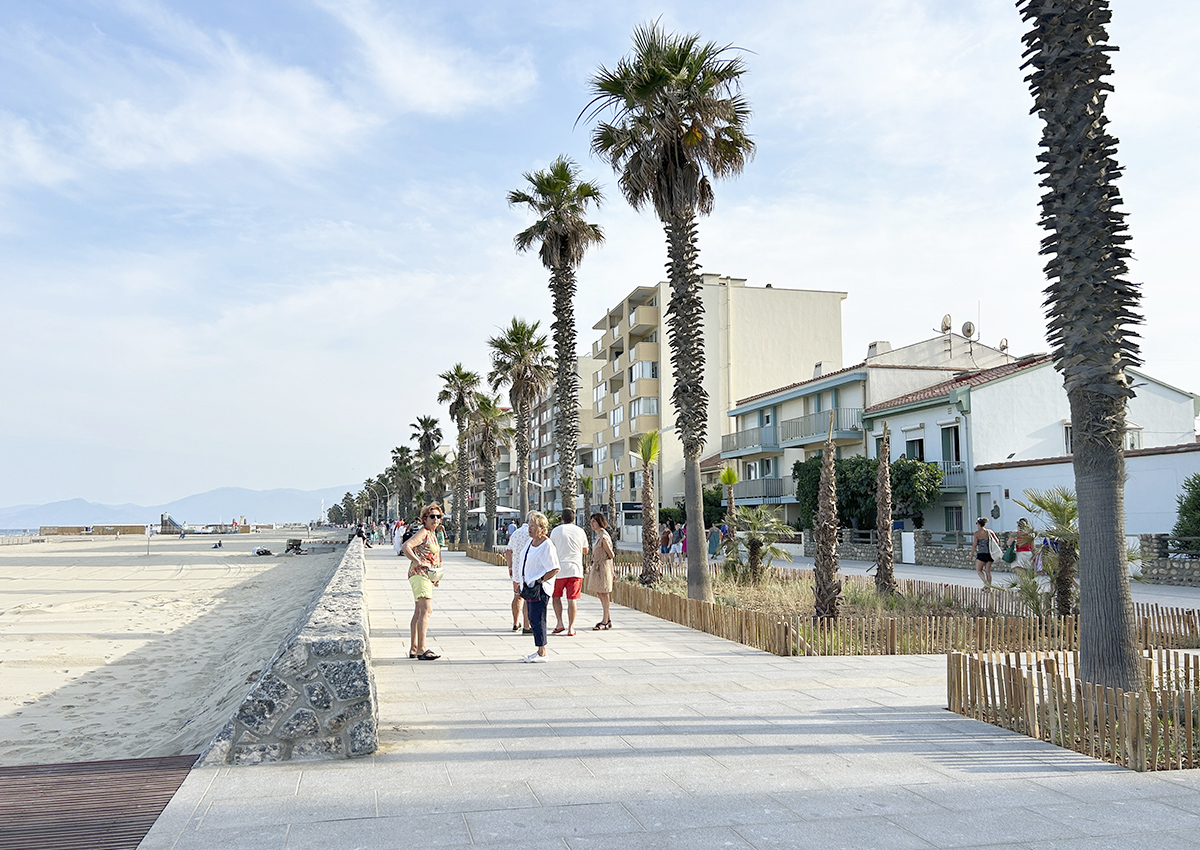
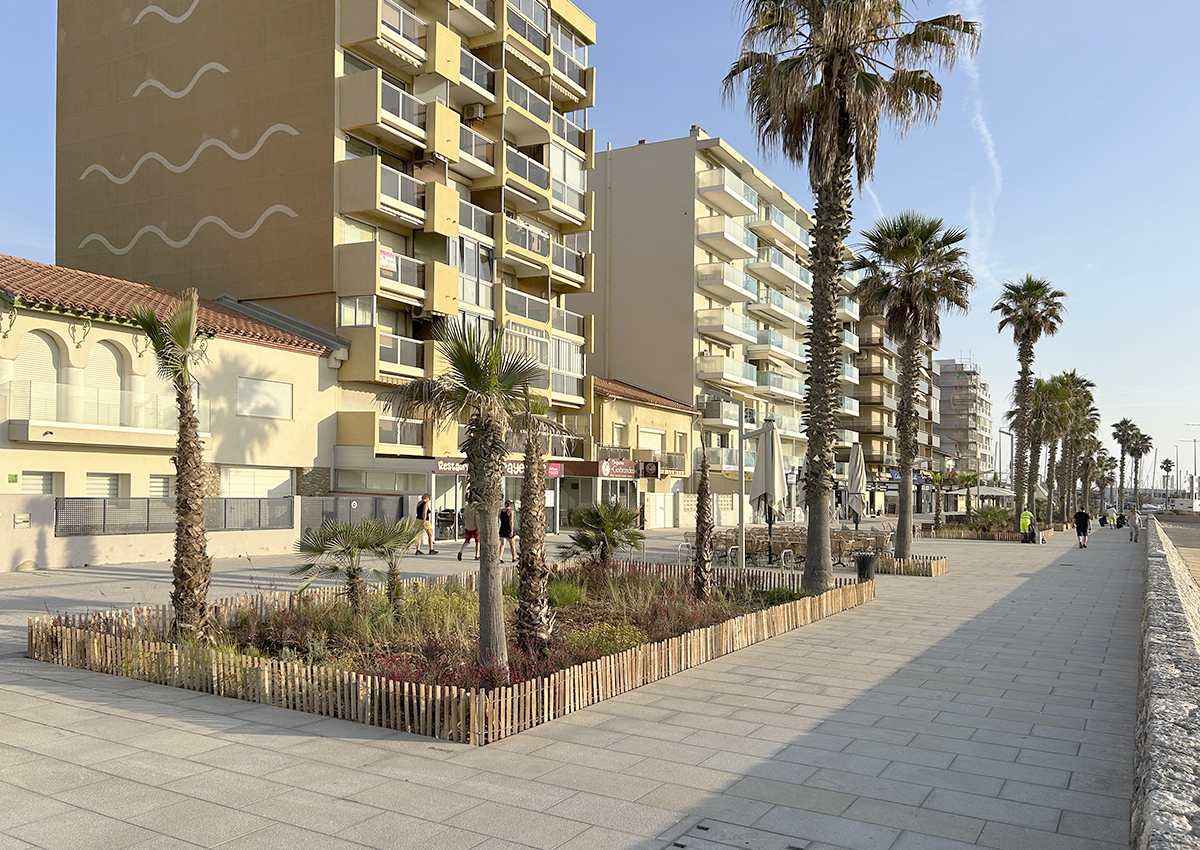
The Promenade de Canet-en-Roussillon transforms the waterfront into a calm, pedestrian-first public realm. To begin with, through-traffic is removed. Access is limited to residents and essential services. Meanwhile, active mobility leads the design with a two-way cycle lane and a generous shared-surface street.
Transversal streets—Rue Pasteur, Rue Maréchal Foch, Avenue du Roussillon and others—extend as clear view corridors toward the sea. As a result, orientation improves and the coastline becomes present from within the town. At each junction, pocket plazas appear. In these small squares, long benches and individual chairs create flexible “urban living rooms.”
Large rectangular planters structure every stop. Moreover, planting follows the Occitanie local species catalogue and uses drought-tolerant Mediterranean shrubs. Existing palms are preserved and, in addition, Washingtonia filifera and Chamaerops humilis are introduced. Consequently, irrigation demand drops and biodiversity increases.
The material palette is robust and legible. Exposed-aggregate concrete and natural stone in beige and blue-grey distinguish walking, cycling, terraces and crossings. Therefore, accessibility and maintenance are improved. Finally, a unified family of light columns differentiates linear sections and plazas, enhancing comfort after dark.
The Promenade de Canet-en-Roussillon is one coherent project. Nevertheless, it will be delivered in two phases: Boulevard de la Jetée to Avenue du Roussillon first, and then to Place de la Méditerranée.